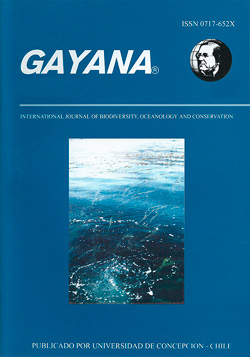Ex situ conservation measures: A metapopulation approach based on the classic Levins model
Keywords:
conservation, impulsive differential equations, Levins model, metapopulationAbstract
Given a metapopulation, which as such, is distributed in fragments or patches, we can think that this is at risk of extinction if the number of occupied patches is decreasing. In this sense, a measure of conservation to consider could be the incorporation of individuals to unoccupied patches. This process is known as ex situ conservation. In the present work we will suppose a metapopulation that is becoming extinct, whose dynamics will be modeled mathematically through the model proposed by Richard Levins in his work “Some demographic and genetic consequences of environmental heterogeneity for biological control”. The effect of an ex situ conservation measure, consisting of the artificial colonization of unoccupied patches, will be incorporated into the model, with the purpose of preventing the total population from becoming extinct. The incorporation of this conservation measure will be expressed through a system of impulsive differential equations, from which a series of simulations will be generated, in order to understand the long-term dynamics and determine what factors influence the success of the measure of conservation.




